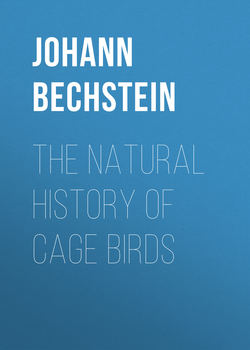Читать книгу The Natural History of Cage Birds - Bechstein Johann Matthäus - Страница 42
LARGE BEAKED BIRDS
THE ROSE-RINGED PARRAKEET
ОглавлениеPsittacus pullarius, Linnæus; La Perruche à tête rouge, Buffon; Der Rothköpfige Guineische Sittich, Bechstein
Bird-sellers give the name of Guinea-sparrow to this little parrakeet, which is not larger than the common crossbill. The beak is red, but pale at the tip, the membrane at the base ash colour, as well as the circle round the eyes. The feet are grey, the iris bluish; the front part of the head and throat are red; the edge of the wings and rump blue. The upper side of the tail feathers is red, the under has a black streak, the tip is green; the two centre feathers are entirely green, like the rest of the body.
In the female, the colours are the same, though lighter, and the lower part of the wing is yellow.
These birds may be found in any part of the torrid zone in the old world, from Guinea to India. As most of them died on the voyage, there were formerly very few of them in Europe, but as the means of preserving them is now better known, most bird-sellers have them. Though they cannot learn to speak, and their cry is rather disagreeable, yet one cannot help admiring them as much for their beauty as their great mildness. They are so much attached to each other that they must always be had in pairs, and if one dies the other rarely survives it. Some people think that a mirror hung in the cage, in which the survivor may imagine that it still sees its lost companion, will console it. The male remains affectionately near the female, feeds her, and gives her the most tender caresses; she, in her turn, shows the greatest uneasiness if she be separated from him for an instant. In the countries which this species inhabits, it makes great havoc among the corn. In Europe it is fed on canary seed, millet, and white bread soaked in boiled milk.
